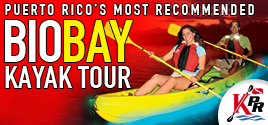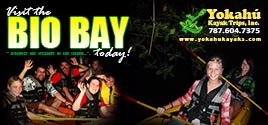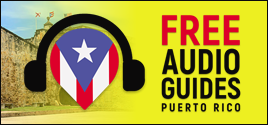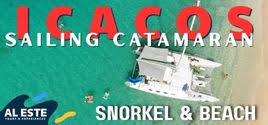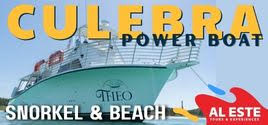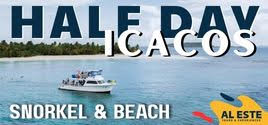Explore Puerto Rico’s Taíno Roots
La Ruta Taína is a loose connection of significant sites highlighting the indigenous people of Puerto Rico — the Tainos. Visiting these sites offers travelers the opportunity to embark on a cultural experience to learn about Puerto Rico’s heritage and indigenous traditions.
La Ruta Taína runs north to south, from Arecibo to Ponce, passing through the towns of Utuado, Jayuya and Adjuntas. Along the way, visitors will discover the oldest ceremonial centers in the Caribbean, indigenous petroglyphs, villages, tombs, museums and legends, as well as caves, beaches and natural reserves.

The Taínos
The Taíno people called Borinquen (their name for Puerto Rico) home for about 700 to 1000 years. Unfortunately, in the early 1500s, the Spaniards arrived in Puerto Rico and most of the Taíno males were enslaved, and the women became wives for the soldiers. Many were killed off by disease. While a small bit of Tiano blood runs through many Puerto Rican veins, there are few, if any pure-blood Taíno left on the island, so little first hand knowledge remains of the culture.
Even so, the Taínos’ cultural contributions can be seen today in artwork, food, and language. Many of the symbols from the petroglyphs are used in all kinds of art and decorative works. Staples of the Puerto Rican diet include cassava (yuca), batata (sweet potato) and calabaza (pumpkin). The Taíno language contributed some words that have been adopted into both the English and Spanish languages, including barbacoa (barbecue), hamaca (hammock), canoa (canoe), tabaco (tobacco), and huracán (hurricane).
Following La Ruta Taína
If you want to explore La Ruta Taína, you can visit Cueva del Indio and Cueva Ventana in Arecibo, Centro Ceremonial Indígena Caguana in Utuado, Piedra Escrita de Jayuya and Museo del Cemí in Jayuya, and Centro Ceremonial Indígena de Tibes in Ponce.
We’ve written about each of these sites in detail in the past, so the following sections provide a quick overview with links to the corresponding detailed articles.

Cueva del Indio in Arecibo
The ocean-side area around Cueva del Indio is probably one of our favorite spots on the island. This sea-level cave is said to contain the largest number of indigenous petroglyphs found along the coastal zone. Legend has it that the Taínos used this cave for tribal meetings, and for communicating with the gods. In order to access the cave and petroglyphs, you will need to climb down into the cave, which is not easy since the ladder is now gone. It is not something I recommend you try! Wear sturdy shoes, and (after seeing the cave) take a long walk to the east along the rocky outcroppings and the beaches in the area.

Cueva Ventana in Arecibo
Cueva Ventana (or “window cave”) offers a fantastic view of the valley below from the “window” set high up on the side of a limestone cliff. The cave itself is home to many critters, including birds, bats, and snakes. The 1 hr tour includes a nature walk, and informative discussion about the Taino people and viewing some petroglyphs inside the caves.

Centro Ceremonial Indígena Caguana in Utuado
The Caguana Indigenous Ceremonial Park is said to be one of the most important Taíno-culture archaeological sites in the Antilles today. Excavations here have uncovered stone-lined ball courts (bateys), 10 plazas, large, intricate petroglyphs, pottery, and other Taíno artifacts.

Piedra Escrita in Jayuya
The centerpiece of the Piedra Escrita Recreation Area is the Piedra Escrita de Jayuya, which sits smack in the middle of the Río Saliente. This rock contains a number of interesting petroglyphs, including spirals, faces, and the famous coqui drawing that shows up in so much of the artwork in Puerto Rico. There is a wooden walkway that leads down the the river’s edge, where you can get a view of the petroglyphs. If you don’t mind getting wet, you can get into the river and get a close-up view of the petroglyphs. Just be careful!

Museo del Cemí in Jayuya
The Cemí Museum is a cemí-shaped building that houses a number of Taíno artifacts. A visit to this museum is a quick one, but there are a number of other things to see in the area, so there will be other stuff to do after you see this museum.

Centro Ceremonial Indígena de Tibes in Ponce
The Tibes Indian Ceremonial Center is the one of the most important archaeological sites in the Caribbean. The center offers some really nice information and examples of the Igneri, pre-Taíno, and Taíno cultures of ancient Puerto Rico. This site was unknown until a flood in 1975 washed away the topsoil and exposed 2 ceremonial plazas and 7 ball fields. Archaeological excavations have uncovered burial sites, petroglyphs, and other artifacts.
Details
It’s unrealistic to expect to hit all of these sites in a single day. But if you are in the Arecibo area, you can start on the north coast and make your way southward toward the center of the island. Likewise, if you are in the Ponce area, you can start in the south and make your way northward toward the center of the island.
Many of these sites require walking in open areas. So wear sturdy shoes, a hat, sunscreen, and make sure everyone has water to drink.
Click on a placename below to view the location on Google Maps ...
- Caguana Indigenous Ceremonial Park
- Cemi Museum
- Cueva del Indio
- Cueva Ventana, trailhead
- Piedra Escrita Petroglyphs
- Tibes Indian Ceremonial Center
Puerto Rico Day Trips LLC assumes no responsibility regarding your safety when participating in the activities described in this article. Please use common sense! If your mother or that little voice in your head tells you that you are about to do something stupid … then don't do it!






